The 9x ultimate Content Creation steps to follow if you work in a complex B2B industry.

In today’s busy marketplace a successful business knows how to listen, learn and understand its buyers problems.
Investing in how to effectively educate and inform prospective customers will make you stand out from the crowd.
So when you are producing content make sure you talk specifics rather than a broad solution that appears to fix everything for everybody. Being generic in your offering means that you are compared to everybody, a risky strategy in an overcrowded market.
A role that your business should develop is one of offering information for free, acting as an advisor rather than trying to prematurely sell a solution. Teaching what are the right questions to ask, keeping buyers attentive and able to address their problems through the value that you add will keep you in front of the competition.
The reality is that for many companies they just don’t have enough sales leads to fill their pipeline and therefore struggle to meet sales targets.
Generating enough traffic and leads for marketing; closing more deals for sales – was according to HubSpot’s 2016 State of Inbound report the top challenges for B2B companies.
So Why Should You Care About Content Marketing?
For your sales and marketing to be successful it relies in a big way on content creation. Potential customers need validation that you are trustworthy, knowledgeable and an industry authority, a validation supported by the quality of your content.
It is a world where “content marketing rules”, buyers are more likely to trust other sources of information than your own. According to the Content Marketing Institute’s 2016 benchmark report, 88 percent of B2B organisations are using content marketing, but only 30 percent consider themselves effective at it.
So to help you find the what works best for your company we have created a Content Creation Roadmap, broken down into 3 stages that you can follow (see below):

Use the different steps to help create your very own content roadmap, defining your audience, creating targeted content and then distributing it in the right channels.
You’ll need to create a steady stream of good content to see a return on your efforts. And since the competition is getting stronger, you’ll want to continuously improve and evolve what you do and how you distribute it to reach your audience.
We’ll take you through the 9x steps required to execute a content marketing programme:
So How Do You Create Content?
To get the production, distribution and analysis of your content flowing you will have to build a robust content process.
A good starting point is to look at creating a clear and concise content brief, documenting budgets to themes to methods and goals. At the same time you will need to define the target audience, tapping into your knowledge of the buyer’s persona to identify particular pain points that they will be looking to address – which you will use as keywords, titles and content drivers.
1. Content Brief
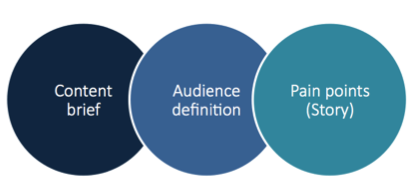
Starting with the content brief, documenting budget, audience, story and goals. Below is an example of the first page of the template we use for every piece of content that we can create. This is the starting point, so we need to make sure that we are producing content for the right reasons and it lines up with the rest of our sales & marketing strategy.
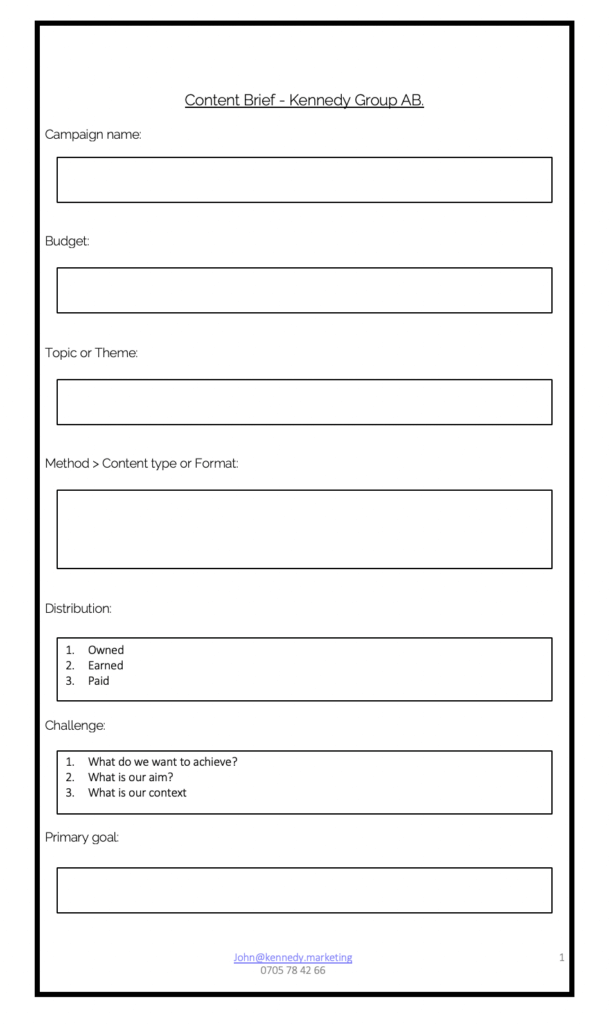
Blog Editorial Calendar
You’ll probably also need some help in creating an editorial calendar for the year ahead. Use our template which you can customise for your own needs to plan who, what and when you are going to deliver your blogging content.

Content Editing Checklist
To make sure once you are creating content that it is “fit for purpose”, it is a good idea to have some questions at hand to make sure that what you are producing is right for the audience and your content goals. Use our customisable checklist to keep your content in shape.
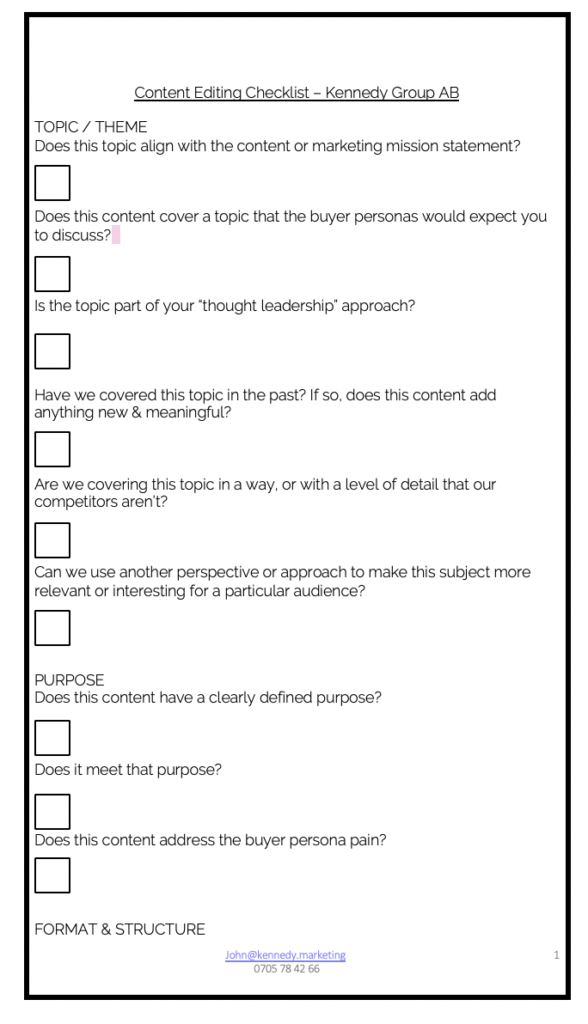
2. Audience Definition
You will need to work in detail on your target audience, otherwise you won’t have material to research for a profile, reading habits and digital behaviour to plan your activities around. Make sure any campaign has a well-defined target audience, otherwise if you are basing the message on a “gut feel” it will not be as effective as you may be expecting.
It can help fine tune your message if you have as a part of the process a Content Mission statement. For example:
- WHO you’re creating content for
- WHAT you’re delivering to your audience and how it will benefit them
- WHY you’re creating content in the first place
3. Pain Points (Story)
To develop a successful content plan, you’ll need to clearly define your “buyer persona.” A buyer persona is a semi-fictional representation of your ideal customer based on various data sources. When you create a buyer persona you are looking in depth into the reasons why a customer would buy. The goal is to reveal through the persona what challenges they are looking to address – how to make a pain your gain. The information that you build around a persona is based on different sources from demographics to firmographics.
The Buyer’s Journey
To understand how to connect your content to your buyer’s needs you can map out the journey a buyer takes from first getting to know you to becoming a buyer (the Buyer’s Journey – see below).

The buyer’s journey across all B2B industries and segments has evolved over recent years with the proliferation of the Internet. Also the trust buyers place in different sources has changed, negatively impacting information solely taken from corporate ones.
According to Google research, Business-to-Business (B2B) researchers conduct an average of 12 searches before they engage with a specific brand’s website. There can be between 7 – 12 touch points with a seller before a contact turns into a qualified lead, according to research from Walker Sands. All of which means that companies have to try to be in front of the buyer over a lengthy and complex sales cycle.
Typically this is not a linear process and prospects may move around as they pass through the different stages of the buying cycle.
Content Ideation
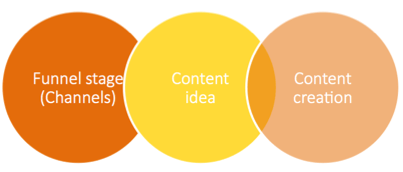
Once you have the brief, audience defined and the pain points identified, it is time to work on the content that will resonate with your buyer persona. Now it is time to get creative, brainstorm some ideas and get into ideation mode. Don’t forget to look back at content you have already produced to see how it performed, identify sales triggers and remember to be creative in terms of using media that will appeal to your target audience.
4. Sales Funnel Stage (Channels)
A sales funnel is the journey your customers take along the different stages of readiness to buy. The funnel can be divided up between TOFU (Top of funnel), MOFU (middle) and BOFU (bottom). At each stage the content marketing demands of the prospect will be different, as their numbers become smaller and their information needs become more detailed.
At the Awareness stage of a buying cycle content in the form of best practices, tips & tricks, checklists, etc works best. This is content that provides value to a range of users, and helps you build a level of trust with your audience. As the potential buyer moves along your sales funnel there will be other opportunities to share content relevant to more specific needs.
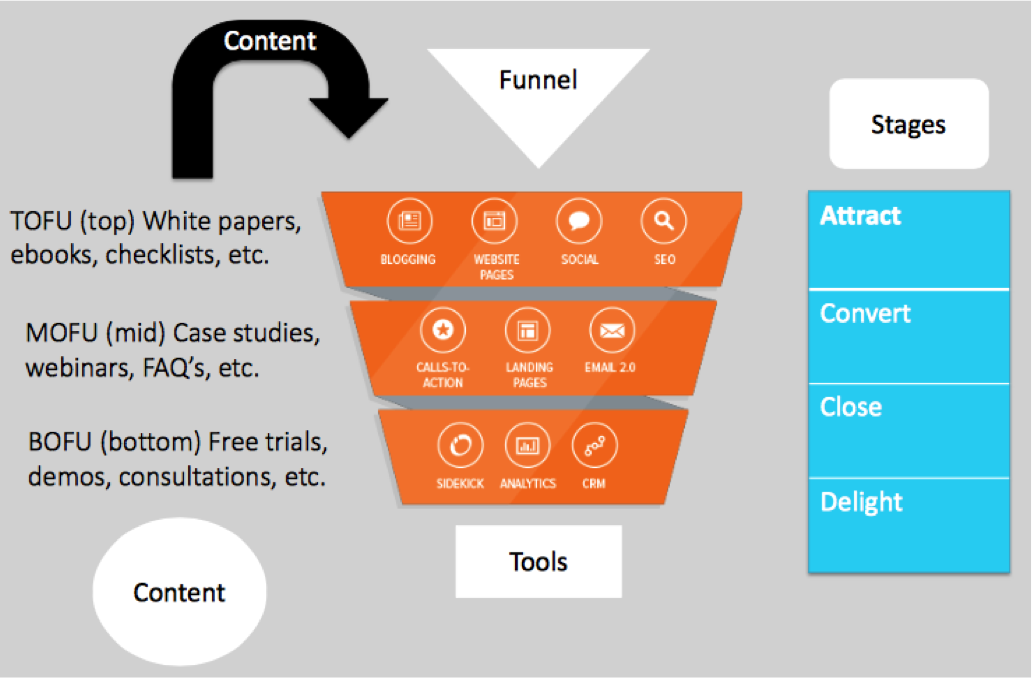
5. Content Ideas
What Kind Of Content Should We Create?
The content plan should address how, when and on what particular platforms you will publish your content. It will go beyond the type of content you’ll create, it should also cover how much resource you are willing to invest in production. There are a number of considerations when planning; which category to use, target persona, mix of content (new- recycled), metrics, frequency of posting, format, etc.
- Category – Is it technical, educational, entertaining, etc.
- Persona – Who is the target?
- Objective – What do you want to achieve?
- KPI’s – how are you going to measure performance?
- Content format – what content will be published and in what form?
- Frequency – how often?
- Content type – what type of content would appeal most to the buyer persona?
- % Of time – overall how much effort will this content need?
6. Content Creation
Use A Content Gap Analysis To Spot What You Need To Create
Bringing together an audit and SWOT analysis of your existing content should give some insights on filling out your “content gaps”. Use the gap analysis to review your own content and identify where you have potential gaps across the buying cycle (Awareness, Consideration & Decision), business goals (for example Educational, Revenue Generating & Customer Experience) or content objectives (Educate, Entertain, Inspire & Convince). Source: Top 10 & Smart Insights.

Content SWOT (Strength, Weakness, Opportunity & Threats)
This is an internal and external review of your content and what is happening in your market. For example, your competitors may be using social media to distribute content or buying certain ad words. This is a high level opportunity to take a view on your content planning needs.
Review, Results and Re-purpose
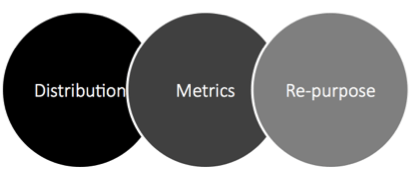
Now you will need to distribute your content. Use your buyer persona insights to target where your audience searches for information, the format that they enjoy and the level of interaction they expect. Soon you will need to assess the impact of your content, look at the metrics and review whether there is a need to make any amendments or look again how to to widen the reach of your content.
7. Content Distribution
Content distribution can be considered as a way to extend the reach of your content marketing, it’s all about making sure the content you create gets found, read and shared by the right audience. A “rule of thumb” is to spend 50% of your efforts on creating the content and the other 50% on distributeion efforts.
There are three main ways of distributing your content – via your own channels (owned), other people distributing and sharing it voluntarily (earned) and paying to distribute it (paid).
Owned media
- Blogging
- Social media sharing / posting
- Social selling
- Website
- Email / e-newsletters
- Digital media (video, podcasts, webinars, presentation slides, etc.)
Earned media
- Develop website backlinks and guest blogging invitations
- Write press releases
- SEO long tail keywords for organic search
- Approaching influencers in the community
- Ask customers to review products via social media, review sites, etc.
Paid media
- Google Adwords / display ad network / Paid Per Click PPC
- SEM (paid search)
- Remarketing
- Social media ad networks sponsored content / display ads
8. Metrics
Define Clear Goals For Your Content Marketing Plan.
What’s your aim for developing a content marketing plan? What are your goals?
A lack of clear goals will make it extremely difficult to measure the return on your content efforts. For example below is a basic chart that plots the business goals against some content objectives. The metrics you need to add to this are those for example that will become KPIs; customer engagement, social shares, lead generation, etc.
9. Re-purpose
Run A Content Audit
Auditing your existing content is a great way to assess if you have the right content to match your buyer’s journey, it’s format, style and distribution path. Putting all this information onto one sheet can effectively keep all your team on board with what has been done, the status, location and creation opportunities.
Below is an example of worksheet that we have set up which you can download and tailor for your own needs.

DOWNLOAD THE CUSTOMISABLE CONTENT AUDIT EXCEL WORKSHEET
Take Away
Whether you are just starting out or a wise content marketer – having a map can be a reference tool or used whenever you need it.

Let me know if you have anything else to add! And if you are interested to learn how to integrate your content and inbound bounding.
